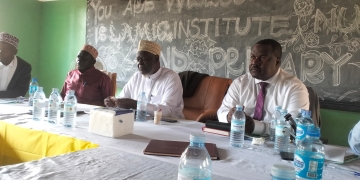
KAMPALA – The Eastern Africa Grain Council (EAGC), a regional umbrella body of the grain sector, on Friday, April 5, 2024, launched a three-year project to boost regional trade in grains.
Gerald Masila, the executive director of the EAGC, announced the project, titled “Strengthening Competitiveness in Export-Oriented Staple Food Value Chains in East Africa,” during a press briefing at Hotel Africana in Kampala.
He said the project worth UGX 7 billion about USD 2 million seeks to facilitate cross-border trade in grains such as rice, maize and sorghum, with Kenya as the destination market and Tanzania and Uganda as suppliers due to their surplus production.
“The project aims to develop enterprise-level capacities and institutional mechanisms to scale up Sanitary and Phytosanitary (SPS) standards and quality compliance, thereby increasing export-oriented grain trade,” Masila said.
He added that the scheme is expected to enhance grain exports within the region through strategies such as grain business hubs operated by farmers. These hubs will utilize technology to enhance grain quality and stimulate trade.
Trademark Africa Country head for Uganda and South Sudan, Anna Nambooze said the project will strengthen farmer-operated grain business hubs (G-Hubs), leveraging technology to optimize grain production, quality, and trade.
“We have co-created the program together with EAGC to be able to increase the staples trade, clean it up, increase productivity, and the general export from Uganda to the rest of the region. We hope to see increased quantities of trade in staples within the region but also see more organized and formalized trade,” Nambooze told reporters.
Under this arrangement, she said the the initiative intends to establish and enhance an information hub to inform regional food balance sheets, influence national and regional food security policies, and cultivate an enabling regulatory environment for trade.
Dr Joshua Mutambi, Uganda’s commissioner for processing and marketing in the Ministry of Trade, Industiries and Cooperatives, said the country’s grain exports currently stand at around $500 million annually and the new project would help improve it.
“This project is very timely because now we know that Uganda is favored by the climate whereby we have two seasons in a year but we have been having challenges accessing markets and this project is going to help the farmers, processors and traders, making sure that they are able to access the market through aggregating, storage and quality control,” he said.
The three-year project is being implemented with funding from the United States government, the Feed the Future initiative through the USAID’s Economic Recovery and Reform Activity (ERRA) programme.










